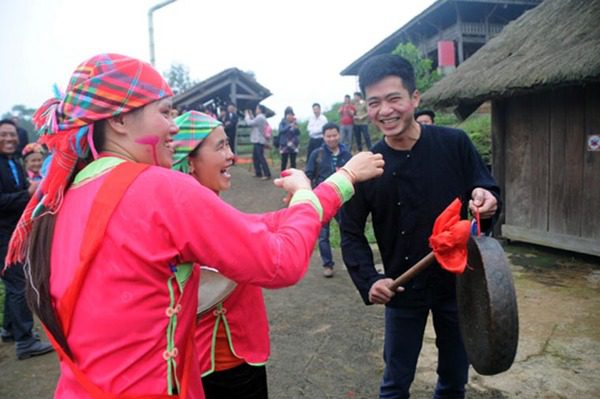Giay Ethnic Group: Exploring the Rich Culture and Traditions
Delve into the enchanting world of the Giay Ethnic Group, a Vietnamese community with a rich history, vibrant culture, and captivating traditions. Explore their origins, unique attire, diverse housing, spiritual beliefs, and artistic endeavors in this comprehensive journey through their way of life. Discover the Giay people’s deep-rooted connection to their ancestral heritage and the beautiful mosaic they contribute to the cultural tapestry of Vietnam.
General Information of Giay Ethnic Group
The Giay Ethnic Group is a fascinating community with a unique history and a rich cultural heritage. Let’s delve into their origin, geographical distribution, population, and language to better understand this remarkable group.
Origin
The Giay people have their roots in China, and their migration to Vietnam occurred approximately 300 years ago. This migration brought with it a rich tapestry of traditions and customs that continue to thrive in their Vietnamese homeland.
Geographical Distribution
The Giay community primarily resides in the provinces of Lao Cai, Ha Giang, Lai Chau, and Yen Bai. The breathtaking landscapes of these regions have been their home for generations, shaping their way of life and cultural practices.
Population and Language
As of the 2019 census of 53 ethnic minorities, the Giay ethnic group is composed of 67,858 individuals, with 34,624 males and 33,234 females. Their language is part of the Tay – Thai language group, belonging to the Tai-Kadai language family.

Giay ethnic group festival
Main Features of Giay Ethnic Group
Costume
One distinctive feature of the Giay people is their traditional attire. Men often wear long shirts that extend to their knees, with a unique feature: a slit on the right armpit and wide sleeves. Loose trousers with wide legs complete the outfit, and they traditionally style their hair in a bun or wear a scarf. In recent times, modifications to their traditional shirts have made them shorter and buttoned in the middle, deviating from the previous underarm fastening.
Housing
The Giay people’s housing is as diverse as their cultural traditions. They have two primary types of dwellings: houses on stilts and houses on the ground. In regions like Ha Giang and Cao Bang, you’ll find Giay people living in stilt houses, while those in Lao Cai reside in houses on the ground. Additionally, some Giay communities in Trinh Tuong, Bat Xat, and Lao Cai live in ‘trinh tuong’ houses, made of rammed earth.
Their traditional roofs are typically thatched or made of dry straw. A Giay house is usually divided into three compartments, with the central compartment serving as the most important and sacred area. It houses the main door for welcoming guests and for ancestral worship. The two side compartments are used as bedrooms for family members, and the space behind the ancestral altar serves as a resting place for the elderly or a storage area for various household items.
An interesting architectural feature of Giay houses is the attic, covering half of a compartment and situated above the fireplace. This space is reserved for storing agricultural products, showcasing their practicality and resourcefulness.
Religion and Beliefs
The Giay people hold strong beliefs rooted in their traditions. Ancestor worship is a fundamental aspect of their spiritual life, with ancestral altars typically placed in the most solemn position within their homes. The altar often features three joss-stick bowls, with the largest bowl in the middle, dedicated to the earth god, and two smaller bowls on either side to honor the deceased members of the family.
Apart from ancestor worship, the Giay also revere the forest god and the village god. Their beliefs are deeply intertwined with totem worship, with each family worshiping a distinct animal. These totem rituals echo the features of the chosen animal and add a unique layer of symbolism to their spirituality.
Artistic Activities
The Giay people are known for their artistic pursuits, which play a central role in their cultural celebrations and daily life. They have a traditional trio of musical instruments, including drums, gongs, and pi le trumpets. These instruments are frequently employed during festivals, weddings, and funerals, infusing these occasions with vibrant rhythms and melodies.
One distinctive musical tradition is reciprocal singing, performed by Giay artisans in their native language. This traditional singing style is particularly prevalent at weddings in Lao Cai province. Additionally, the Giay people have two captivating traditional dances—the lantern dance and the fan dance, both of which are enthralling to watch and participate in.
Folklore and storytelling are integral to their culture. The Giay community keeps a treasure trove of folk tales, often presented in the form of poetry or song. These stories offer valuable lessons and insights, providing guidance on work, finances, and life wisdom.
In conclusion, the Giay Ethnic Group is a remarkable community with a rich cultural heritage, a strong sense of tradition, and a deep connection to their ancestral roots. Their distinctive clothing, diverse housing structures, unique belief systems, and vibrant artistic traditions make them a captivating subject of study and exploration.
By understanding and appreciating the Giay Ethnic Group, we not only celebrate their unique way of life but also gain insights into the rich tapestry of cultures that make up the beautiful mosaic of Vietnam.
Start planning your tailor-made Vietnam tour by contacting one of our specialists…







